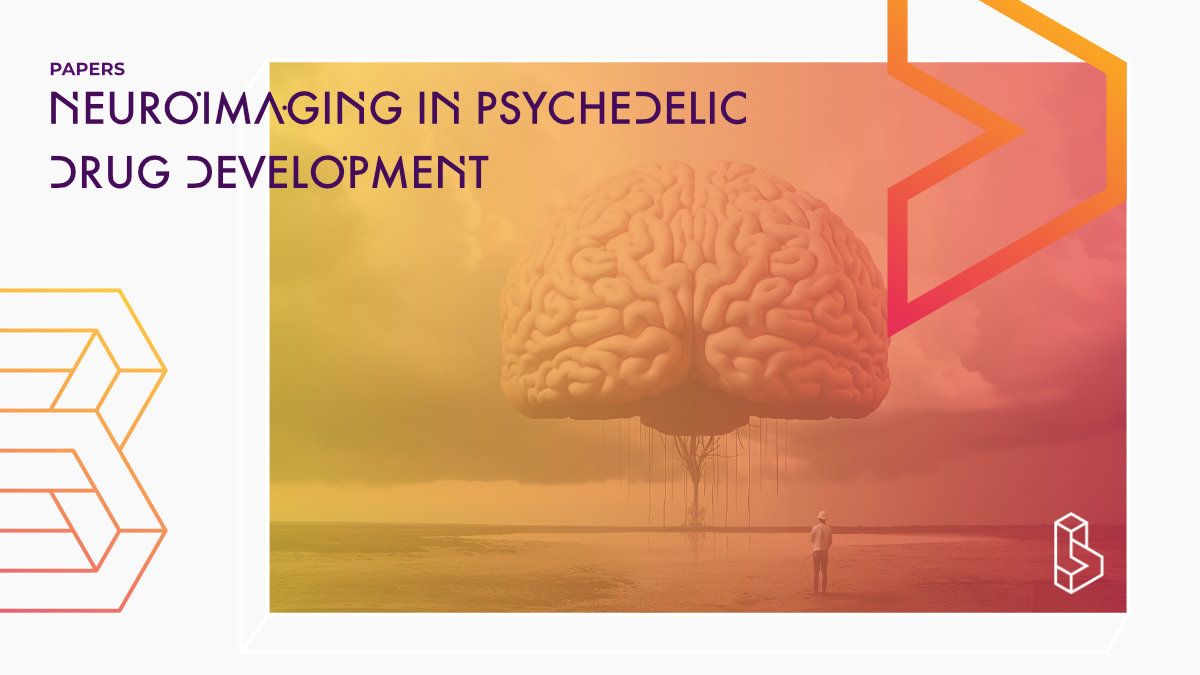This review (2023) discusses the emerging field of psychedelic therapy for psychiatric disorders, emphasizing the potential of classic serotonergic psychedelics like psilocybin and LSD and substances like ketamine, MDMA, and ibogaine. It highlights the role of advanced neuroscientific research methods, particularly neuroimaging using Positron Emission Tomography (PET) and Magnetic Resonance Imaging (MRI), in advancing the understanding of drug and therapy effects on the brain. The article identifies key knowledge gaps, including the relationship between acute and longer-term effects, the precise characterization of effects at the 5-HT2A receptor, and the impact of these compounds on neuroplasticity, and proposes a roadmap for future research to address these questions through multimodal PET/MRI studies.
Abstract of Neuroimaging in psychedelic drug development
“Psychedelic therapy (PT) is an emerging paradigm with great transdiagnostic potential for treating a range of psychiatric disorders, including depression, addiction, eating disorders, post-traumatic stress disorder, and others. ‘Classic’ serotonergic psychedelics, such as psilocybin, lysergic acid diethylamide (LSD), N, N-Dimethyltryptamine (DMT) and 5-methoxy-N,N-dimethyltryptamine (5-MeO-DMT), form the main focus of this movement, but other substances including ketamine, 3,4-Methylenedioxymethamphetamine (MDMA) and ibogaine also hold promise. The development of these novel treatment modalities in the early 21st century has occurred concurrently with the wider use of advanced human neuroscientific research methods; principally neuroimaging. This has enabled assessment of drug and therapy brain effects with greater precision and quantification than any previous novel development in psychiatric pharmacology. We outline some of the major trends in existing data and suggest that the modern development of PT has benefitted greatly from the use of neuroimaging. Important gaps in existing knowledge are identified which can be addressed by future neuroimaging work, principally using combined Positron Emission Tomography (PET) and Magnetic Resonance Imaging (MRI) methods, plus other adjunct techniques. Suggestions for future multimodal imaging studies are discussed, which would resolve some of these questions and provide a firmer foundation for the development of PT.”
Authors: Matthew B. Wall, Rebecca Harding, Rayyan Zafar, Eugenii A. Rabiner, David J. Nutt & David Erritzoe
Summary of Neuroimaging in psychedelic drug development: past, present, and future
Introduction
The use of psychoactive substances for medicinal or spiritual purposes stretches back to pre-history. In the late 1940s, lysergic acid diethylamide (LSD) was first synthesized and used clinically for a number of psychiatric conditions, but was banned in the US in the mid 1960s.
Most countries worldwide followed suit, encouraged by President Nixon’s repressive “war on drugs”. This effectively halted clinical and mechanistic research into psychedelics for nearly 50 years.
The technology available for neuroscientific research in the 1950s was comparatively primitive by modern standards, which led to a number of stagnant decades in the development of our understanding of the neural mechanisms underpinning the effects of psychedelics in humans.
Find this paper
Neuroimaging in psychedelic drug development: Past, present, and future
https://doi.org/10.1038/s41380-023-02271-0
Open Access | Google Scholar | Backup | 🕊
Cite this paper (APA)
Wall, M. B., Harding, R., Zafar, R., Rabiner, E. A., Nutt, D. J., & Erritzoe, D. (2022). Neuroimaging in psychedelic drug development: Past, present, and future.
Authors
Authors associated with this publication with profiles on Blossom
David ErritzoeDavid Erritzoe is the clinical director of the Centre for Psychedelic Research at Imperial College London. His work focuses on brain imaging (PET/(f)MRI).
David Nutt
David John Nutt is a great advocate for looking at drugs and their harm objectively and scientifically. This got him dismissed as ACMD (Advisory Council on the Misuse of Drugs) chairman.
Institutes
Institutes associated with this publication
Imperial College LondonThe Centre for Psychedelic Research studies the action (in the brain) and clinical use of psychedelics, with a focus on depression.
